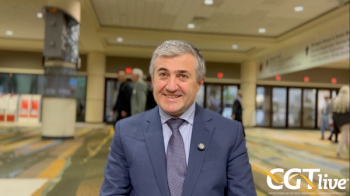
FDA Approves Zolgensma for SMA Treatment
This is the first gene therapy approved for a devastating condition that leads to permanent ventilation or death for many patients by age 2.
The US Food and Drug Administration (FDA) has approved onasemnogene abeparvovec-xioi (Zolgensma) for the treatment of spinal muscular atrophy (SMA) in children under 2 years of age.
Children with SMA lack a functioning copy of the survival motor neuron 1 (SMN) gene, which leads to muscle weakness and difficulty breathing, swallowing, speaking and walking. In severe forms, SMA leads to a need for permanent ventilation or death by age 2 in most cases.
The treatment consists of an adeno-associated virus vector that delivers a functional copy of the SMN gene. A single intravenous administration of Zolgensma allows for the production of SMN protein, improving muscle function and survival.
"A diagnosis of SMA is devastating, leaving untreated babies who have the most severe form with painfully short, highly medicalized lives, during which they are unable to lift their heads, sit or roll, have difficulty swallowing and breathing and need 24-hour care," said Jerry Mendell, MD, principal investigator at the Center for Gene Therapy at The Abigail Wexner Research Institute of Nationwide Children's Hospital in Columbus, OH.
This is the first gene therapy approved for SMA and only the second therapy approved for the devastating condition. In 2016, the
"Children with SMA experience difficulty performing essential functions of life. Most children with this disease do not survive past early childhood due to respiratory failure" said Peter Marks, MD, PhD, director of the FDA's Center for Biologics Evaluation and Research. "Patients with SMA now have another treatment option to minimize the progression of SMA and improve survival.”
The FDA’s decision to approve was supported by data from the phase 1 START trial and phase 3 STR1VE trial.
In the START trial, 15 patients were treated with either a low dose (n = 3) or high dose (n = 12) of Zolgensma. At 24 months after treatment, 1 patient in the low-dose group required permanent ventilation while none in the high-dose group did. In the high-dose group, 75.0% (9 of 12) were able to sit for ≥30 seconds without support and 2 patients (16.7%) were able to stand and walk without support.
Mendell said that in the START trial, all participating children were alive at the end of the study, and many had been able to reach the milestones of sitting, rolling, crawling, and playing.
“This level of efficacy, delivered as a single, one-time therapy, is truly remarkable and provides a level of unprecedented hope for families battling SMA Type 1. We now have data 4 years out from the trial, and we see the durability of this gene therapy," said Mendell.
The ongoing STR1VE trial enrolled 21 patients with SMA-1 who did not require ventilator support and were able to eat and drink orally.
At baseline, the mean CHOP-INTEND score, an assessment of motor skills in children with early-onset SMA, was 31.0 (range 18 — 47). The mean age of patients at time of treatment was 3.9 months (range 0.5 – 5.9 months). Based on natural history of SMA progression, study participants would not be expected to sit without support and just 25% would be expected to survive without permanent ventilation past 14 months of age.
As of March 2019, 19 patients were alive, did not require permanent ventilation, and continuing in the trial. One patient died due to SMA progression and one withdrew from the study.
Meeting a co-primary endpoint, 13 of the 19 continuing patients hand reached 14 months of age without requiring permanent ventilation. The other co-primary endpoint was met when 47.6% of patients (10 of 21) were able to sit without support for ≥30 seconds between 9.2 and 16.9 months of age.
"Today's approval marks another milestone in the transformational power of gene and cell therapies to treat a wide range of diseases," said Acting FDA Commissioner Ned Sharpless, MD. "With each new approval, we see this exciting area of science continue to move beyond the concept phase into reality.”
Zolgensma is currently under expedited review in Europe and Japan.
Newsletter
Stay at the forefront of cutting-edge science with CGT—your direct line to expert insights, breakthrough data, and real-time coverage of the latest advancements in cell and gene therapy.

















































